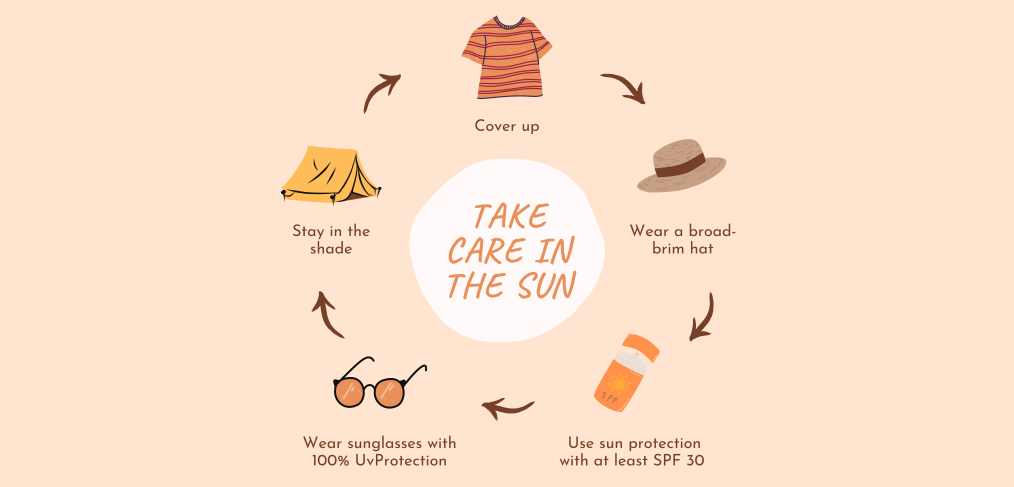
Stay safe in the sun
We all remember having to slap on the sunscreen as kids, but lots of adults can be lax about sun protection. Overexposure to UV rays is a major risk factor for melanoma, a cancer that kills two Americans every hour.
There are lots of benefits to protecting yourself from the sun beyond skin cancer prevention. By using sun protection wisely, you can avoid the discomfort of sunburn, and keep your skin healthy and youthful by preventing premature wrinkles, broken capillaries, and sunspots.
Here are some ways to be vigilant in avoiding skin cancer.
Check the UV rating daily. The risk of sunburn is associated with UV exposure, which can’t be seen or felt. When the UV level is higher than 3, your risk of burning kicks in, so make a habit of checking the UV rating along with the weather for the day. It can easily be higher than 3 in the autumn and spring, even if the weather is cool or cloudy. The UV index also increases with altitude, so if you’re going to be hiking or skiing, it’s especially important to protect yourself.
Avoid direct sun, especially during the hottest part of the day. Stay in the shade whenever possible, but especially from 10 a.m. to 3 p.m. If you’re going to the beach or a park, bring an umbrella in case there’s no shade.
Use SPF 30 or higher, and reapply regularly. Make sure you buy SPF 30+ for everyday wear, or 50+ for heavier exposure. Reapplying every two hours—or more often if you’ve been exercising or swimming—is essential to keep the protection level high. Sunscreen is only good for a year, so buy a new bottle each year to make sure that you will be protected. Many people miss putting sunscreen on the tops of bare feet and the front of their chest—make sure that all exposed skin is covered.
Choose collared shirts and cover up. To protect the back of your neck and shoulders, wear a collared shirt if you know you’re going to be out in the sun. If you’ll be sitting in the sun in a park or at the beach, use a towel or sarong to protect exposed skin.
Wear a broad brimmed hat. Hats with a tightly woven fabric (i.e., no gaps or holes) are important for protecting the back of the neck, ears, forehead, nose, and the top of your head. Skin cancer can appear on your scalp, too.
Wear UV blocking sunglasses. Your eyes can also be damaged by the sun. It can cause cataracts, as well as damage the skin around your eyes. Your eyelids are also thin and sensitive so they are at risk for getting skin cancers. In addition to protecting your eyes from sun damage, UV sunglasses also lessen the risk of macular degeneration in the long term.
Be aware of reflected UV. If you’re on the water or snow, UV can be reflected back at you, so even if you’re wearing protective clothing while on a boat or skiing, make sure any exposed skin is protected with sunscreen. Also be sure to wear sunscreen on cloudy days. Putting on sunscreen each day should be a part of your morning routine if you plan to be outdoors at all, regardless of the weather.
Get tinted car windows. Your car’s windows are allowed to be tinted up to a certain darkness level in order to prevent UV light coming through. This darkness level can be slightly different in different states, so make sure that your car is compliant and that you’re getting the maximum tint allowed.
Use fake tan. If you prefer a tanned look, opt for a fake tan rather than sunbathing or using a sunbed, as it’s a far safer choice.
Get a skin check every year. Don’t forget to book your yearly skin check by a dermatologist. It’s a good idea to book the next one when you’re getting checked so that you’ve got something in the calendar, even if you have to move it when you get closer to the time.
For additional questions, employees may contact the Human Capital Management Benefits Department at 972-925-4300, email benefits@dallasisd.org, or click here for information on the Benefits Website.
Source: LifeWorks



